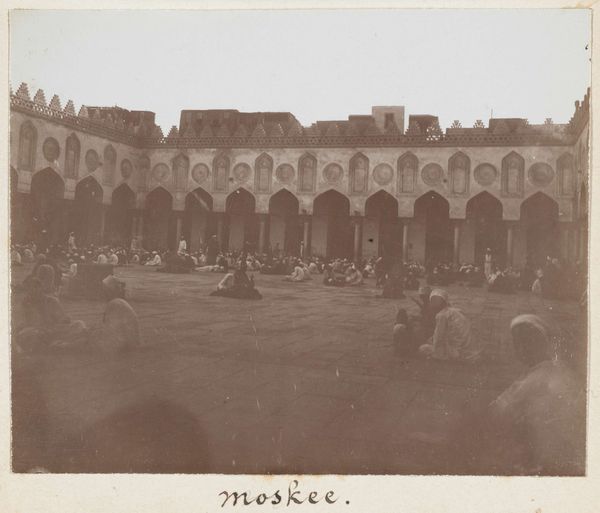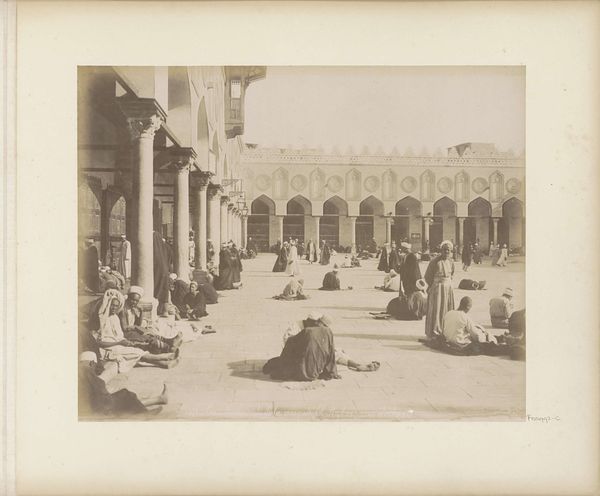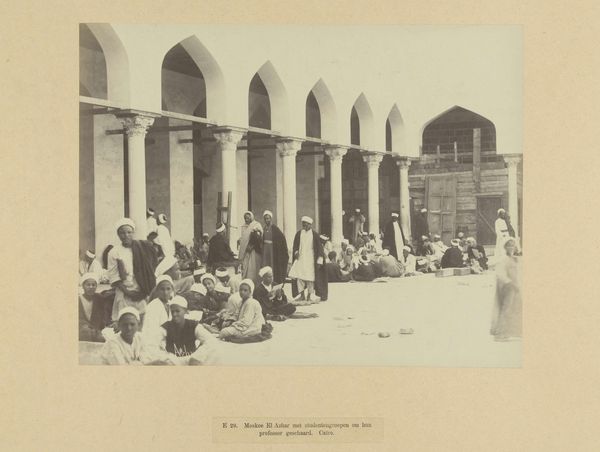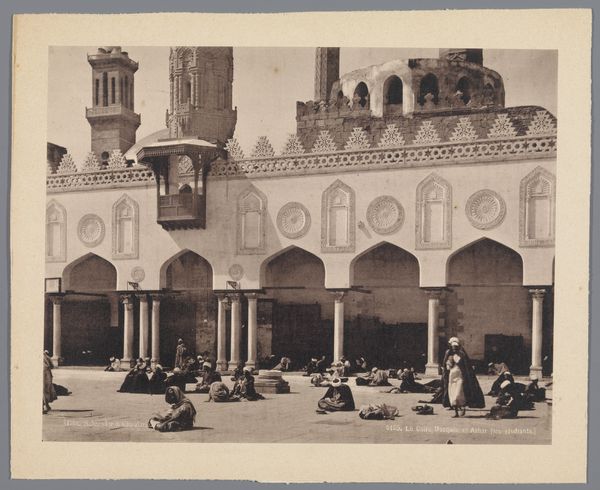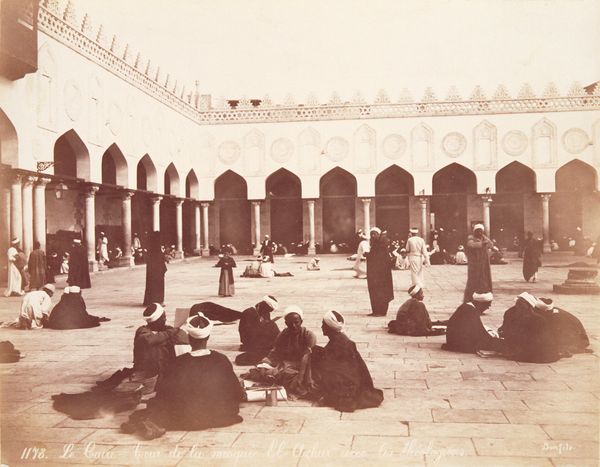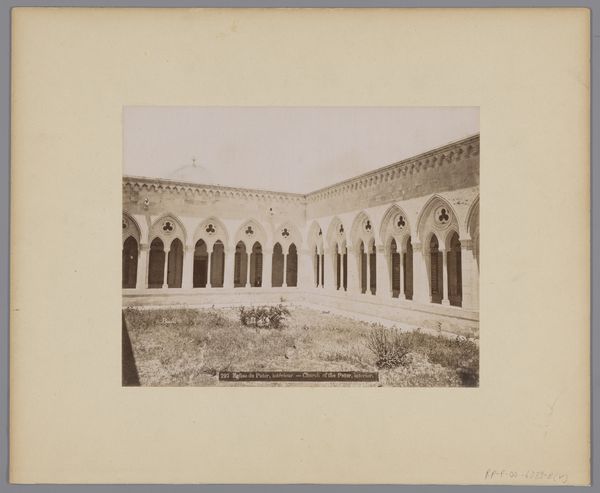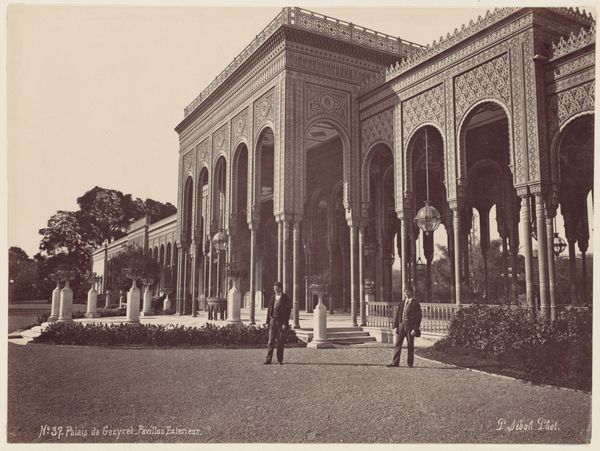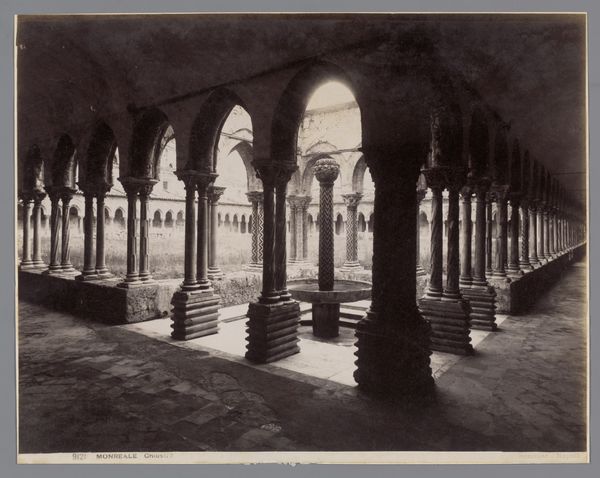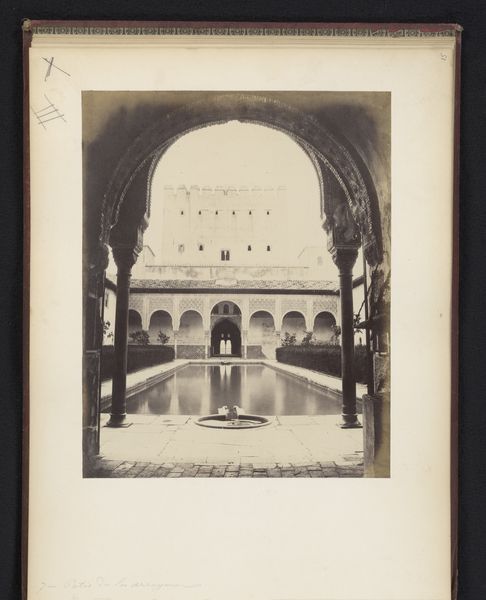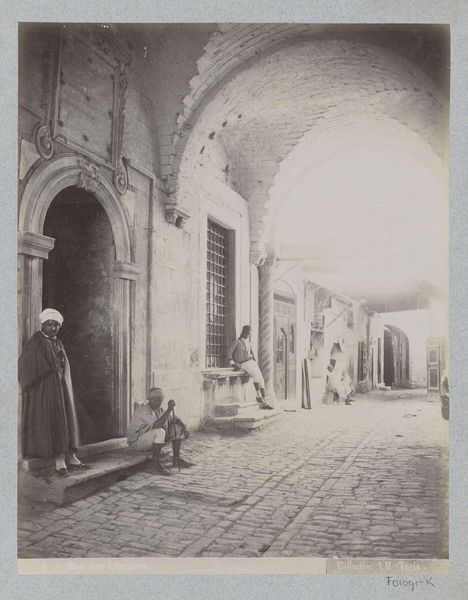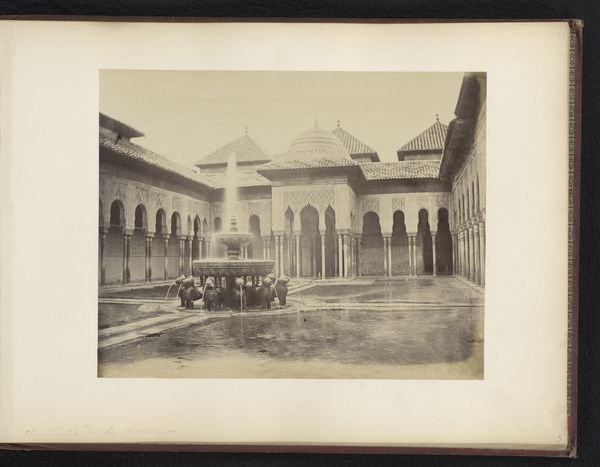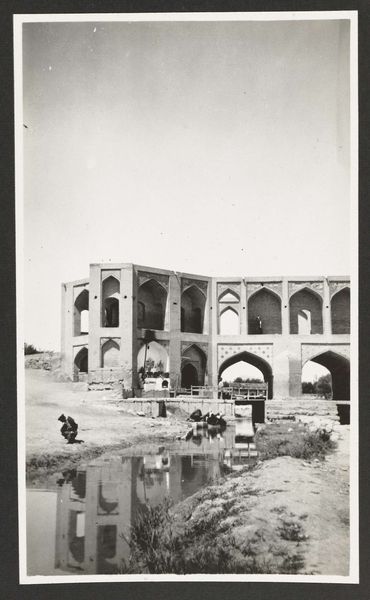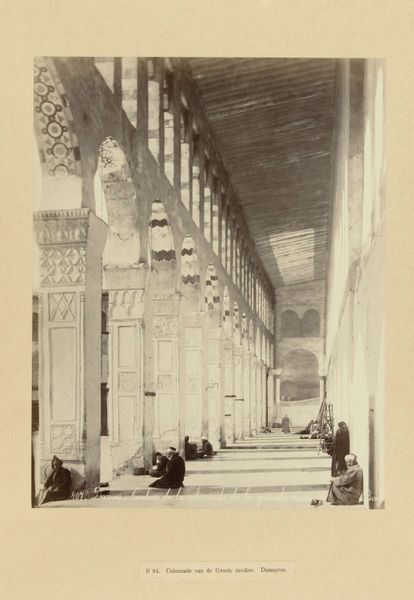
photography
#
photography
#
cityscape
#
islamic-art
#
genre-painting
Dimensions: height 80 mm, width 104 mm
Copyright: Rijks Museum: Open Domain
Curator: Johannes Lodewijk Heldring's 1898 photograph, titled “Theologiestudenten in de Al-Azhar-moskee in Caïro,” offers us a glimpse into a vibrant intellectual and spiritual space. What strikes you immediately about this photograph? Editor: The light, definitely the light. It's soft, diffused...like a memory, almost sepia-toned even before time got its hands on it. And then all those people! A sea of students, bent in study or prayer, beneath those magnificent arches. I can almost feel the hushed energy. Curator: Indeed. The Al-Azhar Mosque, a centre of Islamic learning in Cairo since the 10th century, is depicted here as more than just a physical structure. It's a stage where knowledge and faith intertwine, shaping not only individual destinies but also the broader socio-political landscape of the Islamic world at the time. This image exists in a complex matrix of colonialism and Orientalism. Editor: Oh, absolutely. Heldring, as a Western photographer, inherently brings a specific gaze. One has to ask: is he capturing, or is he, in a sense, *possessing* this moment, this culture, through his lens? It feels both respectful and a little voyeuristic. There's a strange tension there. Curator: Precisely. The photograph's aesthetic choices - the composition, the soft focus - all contribute to a narrative about the 'Orient' as something exotic and timeless. But what's vital to consider is the agency of the students themselves. Editor: Right, they're not just passive subjects! They're active participants in their own stories, pursuing knowledge, engaging in discourse, shaping their futures within that architectural container. What do you think the students felt, being observed by an outsider's eye? Curator: An interesting question, indeed! In looking at images such as these, we confront critical questions about representation, power, and the legacies of colonialism. This invites us to understand and examine these photographs, and also realize their social and historical consequences. Editor: You’re right. It’s made me reconsider my own perspective. It’s such a deceptively simple-seeming image, really. Curator: Precisely! That's the enduring power of art, isn't it? To challenge us and to allow new and changing points of view.
Comments
No comments
Be the first to comment and join the conversation on the ultimate creative platform.
